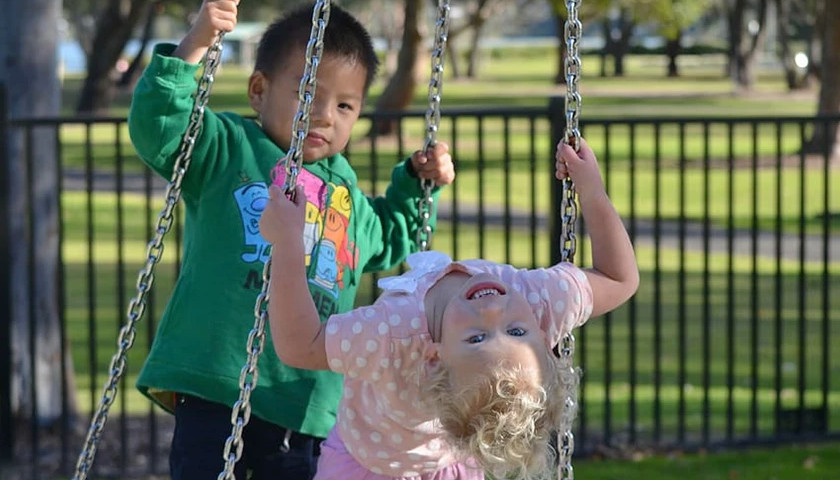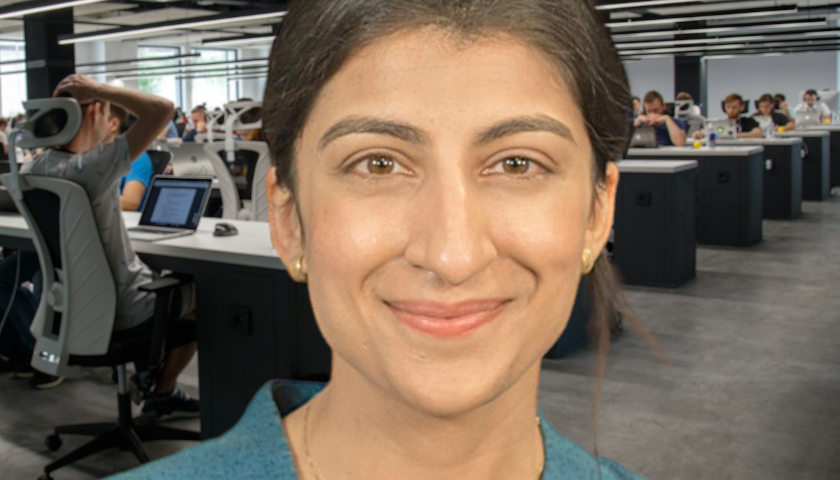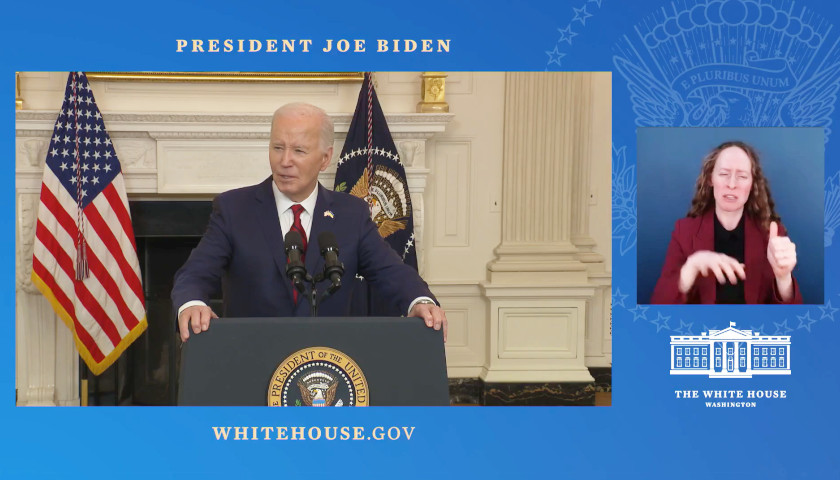by Jon Miltimore
Fall hasn’t even arrived yet, but some US schools are already announcing closures during the sixth month of the coronavirus pandemic.
On Sunday, news broke that a Georgia school district announced it will close a third high school after 25 students tested positive for the coronavirus.
“On behalf of the Superintendent, please be advised that we are, effective immediately, temporarily closing in-person learning at Creekview High School,” the school said in a statement.
The announcement came shortly after media reported that a 15-year-old Georgia boy in Gwinnett County died from COVID-19. Reports said the child had pre-existing conditions. (There were conflicting reports on this front, but the Atlanta Journal-Constitution appears to have received clarification from the state confirming the child did have pre-existing conditions.)
It should be noted, however, that it appears the 15-year-old did not get the virus at school. Media reports indicate that Gwinnett County, home of Georgia’s largest school district, was in a virtual-only school format.
This is tragic news and an inauspicious beginning to the school year. Schools across the US are already grappling with the difficult decision of determining whether they should open or institute virtual learning (or a “hybrid” of both).
The question of whether children should be permitted to congregate to learn and play is a highly relevant issue. It extends well beyond public schools and includes child gathering of all kinds: private schools, homeschool groups, summer camps, clubs, outdoor groups, parties, “learning pods,” and more.
The death of a teenager is a tragic reminder that there are myriad risks and tradeoffs regardless of whatever course schools, businesses, and organizations take. “Stay home, stay safe” may be a nice catchphrase, but we should not presume that staying at home is safer, and we should definitely resist making that choice for others.
‘The Risks to Children Are Low’
With fall approaching, it’s important to understand that evidence suggests that children gathering to learn should be the least of our worries as far as COVID-19. A panel of medical experts who spoke to NBC last month agreed that children are the least likely to contract or suffer from COVID-19.
“This has been a strange pandemic because usually for respiratory viruses, children are the first and most substantially affected,” Dr. C. Buddy Creech, an associate professor of pediatrics at Vanderbilt University Medical Center in Nashville, told the network. “This has really been a flip of that, where it’s our adults, and particularly older adults, that have been more affected.”
When the pediatricians were asked by NBC if they would send their own children back to school in the fall, there was a chorus of agreement—“Yes.” “Absolutely.” “Without a hesitation.” “I have no concerns”—and government data show why.
American children make up roughly 22 percent of the population, Centers for Disease Control and Prevention (CDC) data show, but they account for just 2 percent of COVID-19 cases.
A forthcoming study out of the United Kingdom, billed as one the largest to date on studying the coronavirus in schools, suggests we have little to fear from allowing children to gather to play and learn.
The study analyzed 100 schools in the UK. And though the raw data has not yet been made public, the results of the study have.
“A new study that has been done in UK schools confirms there is very little evidence that the virus is transmitted in schools.” Professor Russell Viner said of the forthcoming Public Health England study. “The risks to children from Covid are very low…”
This was precisely what public health officials in Sweden concluded earlier this year when they decided to leave its schools open.
When 91.3 percent of the world’s schoolchildren were not in school, Swedish children continued to go to class. Masks were allowed, but not required, and some measures were taken to encourage social distancing.
Sweden’s approach was highly controversial, but the results of its policy were not. Not one Swedish child has died—inside of school or outside—and children comprise a lower percentage of COVID-cases than neighboring countries.
A report last month from Sweden’s health agency found that there were 1,124 confirmed COVID-19 cases among children in Sweden recorded between February 24 to June 14, roughly 0.05 percent of children under 19. That’s exactly the same rate—0.05 percent—as Finland, which recorded 584 cases during the same period, even though Finland closed its schools. (Moreover, Swedish children actually account for far fewer COVID cases overall, just 2.3 percent, compared to 8.2 percent of Finnish children.)
Sweden’s public health agency declared that its school policy had “no measurable impact” on the spread of the virus.
These results might come as a surprise to many, but they likely are not a surprise to the architect of Sweden’s health strategy. Early in the pandemic, Anders Tegnell expressed that above all else he was confident that health officials had made the right decision by allowing schools to remain open.
“We feel more and more confident about [not] closing schools,” Tegnell told TV host Trevor Noah in May. “It’s not something that really is going to be effective for this kind of disease. Schools don’t seem to be very much of a motor of this epidemic.”
Gathering to Play and Learn Is Fundamental to Children
The results from Sweden and the UK are important because research shows that allowing children to gather to play, learn, and explore is fundamental to their physical and mental health.
Their attentional, emotional, and cognitive skills are sharpened when they interact with other children in settings that allow them to freely interact with and learn from others. It strengthens immune systems, psyches, and character. If we opt to shelter children from social gatherings and put them in front of screens all day, we sever them from some of the most important and effective learning pathways.
Fear of COVID-19 is understandable, but if we fail to manage that fear we risk damaging our most precious resource.
The scholar Peter Gray, a research professor of psychology at Boston College, has shown that children are natural learners who thrive when given the freedom to play and explore. Much of this learning, Gray writes, is social and moral education children learn through their social interactions with other children.
“Social play is the primary natural means of every child’s social and moral education,” Gray writes. “It is through play that children learn to get along with others. In play they must take into account the other children’s needs, learn to see from others’ points of view, learn to compromise, learn to negotiate differences, learn to control their own impulses, learn to please others so as to keep them as playmates.”
This is a form of natural learning through social interaction, one that cannot be replicated through a school lesson or homework assignment.
Depriving children of social interaction has consequences beyond lost learning, however. Gray and other psychologists link the documented increases in anxiety and depression in children to trends showing a general decline of free play, a consequence of education systems that increasingly forego free learning for formalized instruction, such as worksheets and test prep.
While the detriments of rigid classroom instruction are apparent, emerging evidence suggests social isolation is even worse.
A recent Wall Street Journal article (paywalled) written by Julie Jargon shows that already-high levels of anxiety and depression in young people have surged during the pandemic, particularly in adolescent girls.
One recent nationwide study, Jargon points out, found that nearly 80 percent of girls in grades fifth through eight reported feeling more lonely and isolated since the COVID outbreak began.
Older teens reported similar results, and clinical experts said the decline in mental health stems from quarantine life.
“All of the things that a year ago were increasing girls’ depression have been exacerbated by the pandemic,” Dr. Mary Pipher, a clinical psychologist and author of Reviving Ophelia: Saving the Selves of Adolescent Girls, told Jargon. “Our recommendations were that girls spend more time with other girls, that they spend more time outside the home and that parents encourage girls to take more risks in order to develop skills on their own. Most of those things aren’t happening now because of Covid.”
It is not necessary to put children through this. The best scientific evidence we have shows that children have the least to fear from COVID-19. As the CDC points out, the common flu is far more dangerous for children than the coronavirus.
A society that deprives children of the basic freedom to gather to play, learn, explore, and socialize does them a grave injustice, one that will result in far more harm than good.
Fortunately, we have ample evidence and real-life examples that show the costs of quarantining healthy children far outweigh the benefits.
– – –
Jonathan Miltimore is the Managing Editor of FEE.org. His writing/reporting has been the subject of articles in TIME magazine, The Wall Street Journal, CNN, Forbes, Fox News, and the Star Tribune.





